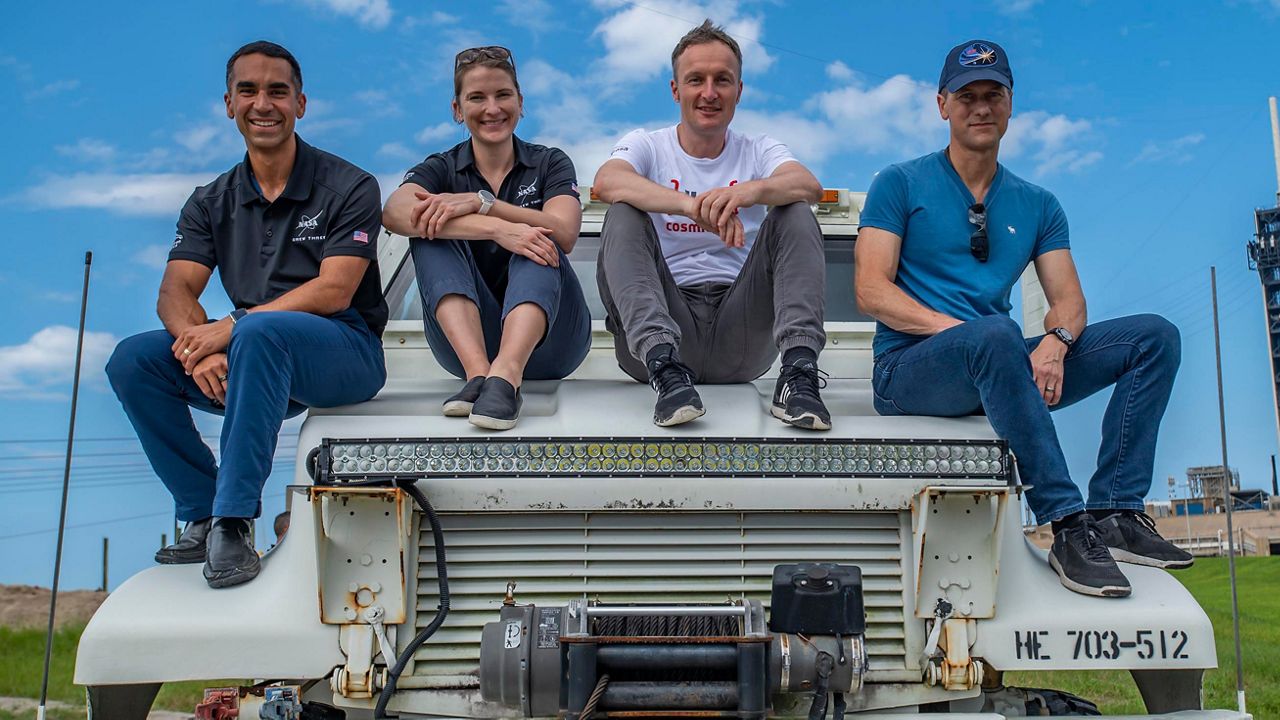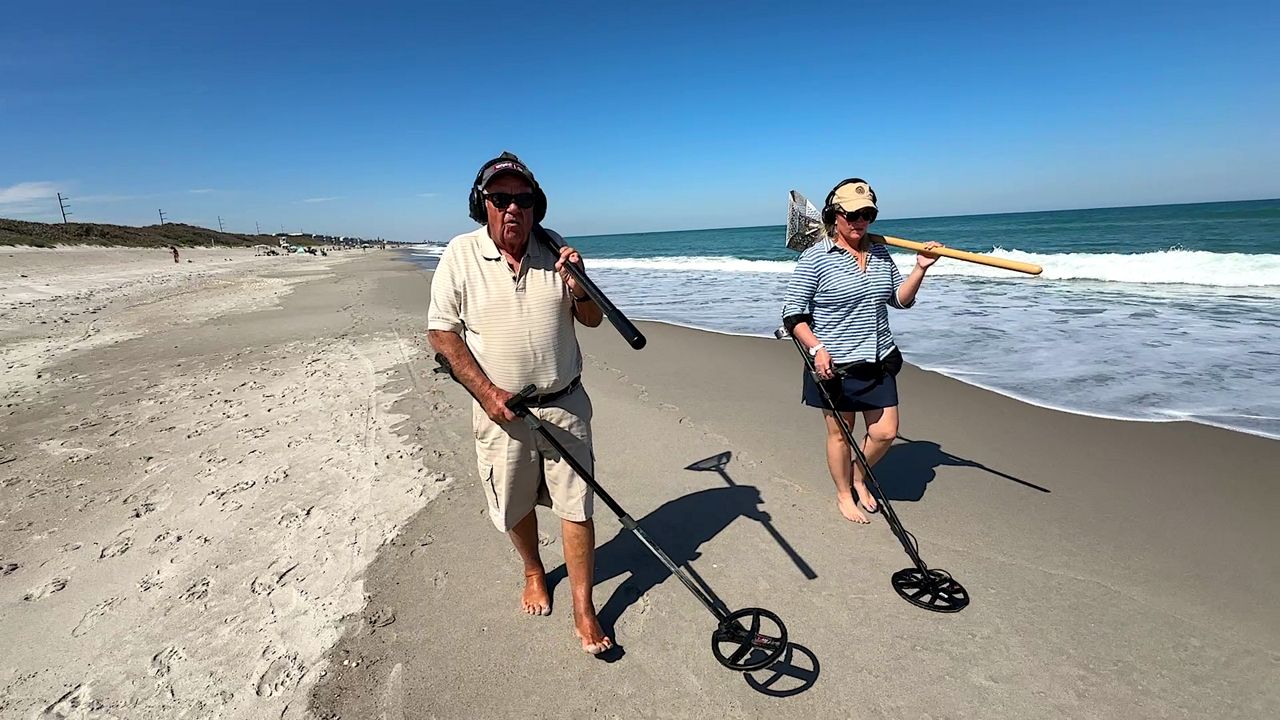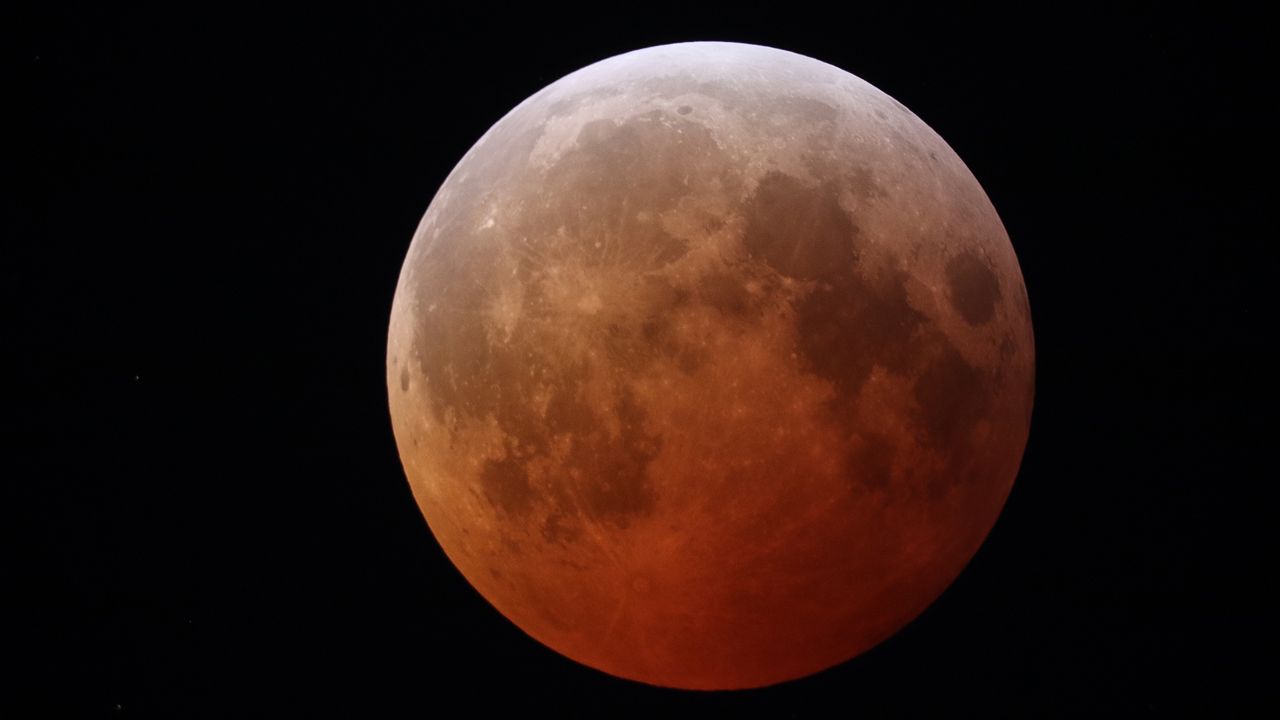In the early morning hours of Halloween, space fans in Central Florida will get a special treat as a four-member crew ascends to the International Space Station aboard a SpaceX Crew Dragon spacecraft.
This will be the fourth time NASA and SpaceX have sent humans to the ISS and the third operational mission, following Demo-2 in May 2020.
Related Stories
- Crew-3 will send four astronauts to the International Space Station for the second time in 2021
- The group consists of three NASA astronauts and one ESA astronaut
- Crew-3 will begin its 6-month mission aboard the ISS when it arrives on Nov. 1
The mission dubbed Crew-3 is scheduled for a 2:21 a.m. EDT launch from Launch Complex-39A at Kennedy Space Center, with a docking time set about 24 hours after that on the first day of November.
During a press briefing following the Flight Readiness Review on Monday, Holly Ridings, the chief flight director for Flight Operations Directorate at Johnson Space Center, noted that the Crew-3 launch will make a notable milestone: reaching the 600th person in orbital space. She said that was one of the notable points for Crew-3 mission commander, Raja Chari
“We’re going to cross the 600-person mark and in some ways, that’s not a lot,” Ridings said. “But then in other ways, it is.”
Before Chari and his three crewmates launch to the ISS, here’s more about the group behind the Crew-3 mission.
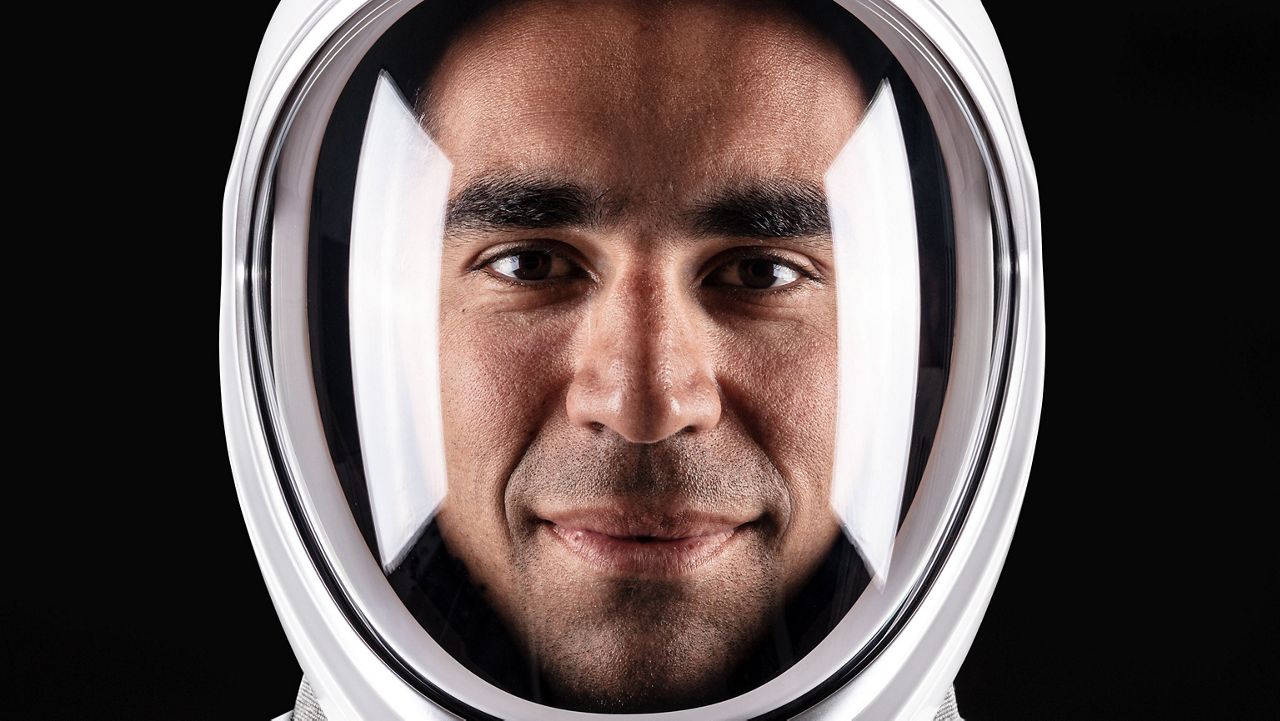
NASA Astronaut Raja Chari — Commander
Raja Chari, 44, joined the Astronaut Candidate Class in 2017 and went through two years of training, after which he served as the director of the Joint Test Team for the NASA Commercial Crew Program.
On Oct. 7 during a prelaunch press conference, he was able to announce the name of their Crew Dragon capsule is “Endurance.” He told Spectrum News 13 afterword that the thought process was almost like naming a child.
“You've got a few that you kind of try out for a while, like, how's that? How does that sound? You try to try to think of all these for your kids. You think of, like all the bad names, people could call your kid if you named them that and tried to protect them from that,” Chari said. “So, not as much a concern of this case, but the same kind of same kind of thing with the same vetting.”
He said the crew came to the consensus and said it was a fitting name not only for their mission, but for the times.
“It just fits so well with, I think, where the agency is, where SpaceX is at, where human exploration is at, and really where I think we as the world are at after having gone through a pandemic for so long and powering through it,” Chari said.
Before joining NASA, Chari was a colonel select in the U.S. Air Force. The Wisconsin native has more than 2,500 hours of flight time and served as the director of the F-35 Integrated Test Force and the Commander of the 461st Flight Test Squadron.
He also flew F-15E combat missions during Operation Iraqi Freedom and was previously deployed to support the Korean peninsula.
Chari said that getting to fly on a SpaceX Crew Dragon spacecraft will be similar to working as a test pilot for planes, but will also be quite special.
“The cool thing in the test world was to be involved in development and then actually get to go fly the vehicle you helped develop," he said. "And so, it feels very much at home to be doing a similar thing here. I've got to help with development. I got to make some changes and now get to actually go, implement and live out those changes in the actual environment.”
Chari was also one of 18 astronauts, along with crewmate Kayla Barron, who were selected to participate in the Artemis program. He said training for that along with preparing for the Crew-3 mission was quite the feat.
Chari said that his family helps keep him grounded and focused on the task at hand.
“My wife, being a military spouse, is has experienced it before, but it never makes it any easier or more fun," he said. "But I think at least she's mentally knows what to expect. The kids will be a different story.
"So, we’re trying — we’ll take advantage of basically all the programs that NASA has, that they have on board, for the astronauts on the station, to help us stay connected with our family, to try to lessen that for the kids, especially, as much as we can.”
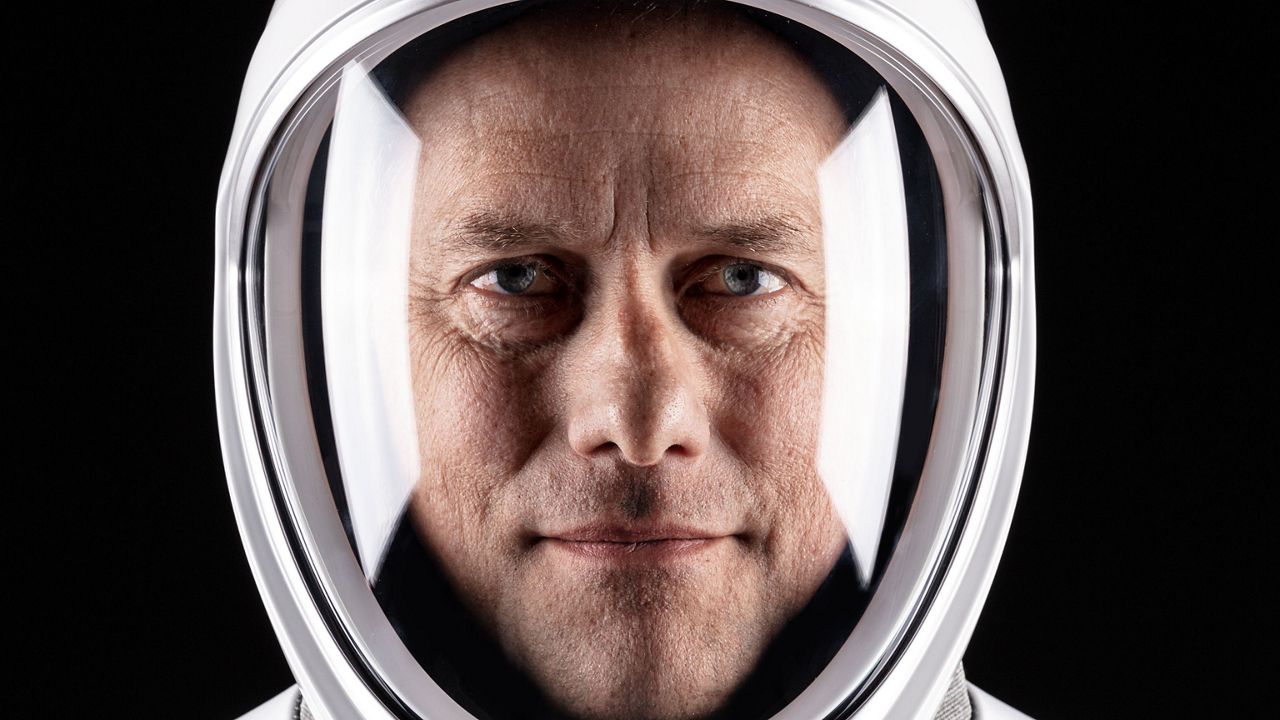
NASA Astronaut Thomas Marshburn — Pilot
Dr. Thomas Marshburn, 61, was selected as part of the 2004 Astronaut Candidate Class, but joined NASA two decades before, in 1994, as a flight surgeon at Johnson Space Center in Houston, Texas.
Prior to his life with America’s space agency, Marshburn earned a doctorate of medicine from Wake Forest University in 1989 and a masters degree in medical science from the University of Texas Medical Branch (UTMB) in 1997.
Between those two medical degrees, Marshburn worked as a LifeFlight physician and trained in emergency medicine at St. Vincent Hospital Emergency Medicine Program. He was also part of the first class of the NASA/UTMB Space Medicine Fellowship.
He said going through medical training was just about as daunting as astronaut training.
“The magnitude was the same, but totally different processes. It's a big difference when someone else's health is in your hands and when your own life is in your hands,” Marshburn said. “And you may not be surprised to find out that most people find it easier to have their own life in their own hands.”
Marshburn said he always wanted to become an astronaut, but he “never thought it could be possible until (he) began to work at NASA as a flight surgeon.”
He described his selection in 2004 as “a dream come true” and said that his background in medicine also gave him an additional urging to join that unique group of people.
“As a physician, to study the physiologic changes that a human undergoes, to understand how to treat the problems that come up with space, motion sickness and a few others, to have the opportunity to experience them myself, immense amount of curiosity, that's going to get satisfied with a spaceflight,” Marshburn said.
This will not only be Marshburn’s third trip to the International Space Station, but his third vehicle as well. He flew as a mission specialist on space shuttle Endeavor as a part of STS-127 in 2009. That mission lasted 15 days and 16 hours and was done in part to complete the construction of the KIBO Japanese Experiment Module.
Marshburn returned for a much longer stay when he launched aboard Soyuz TMA-07M with Canadian Space Agency Astronaut Chris Hadfield and Russian Cosmonaut Roman Romanenko. They were on board the ISS from December 19, 2012 to May 14, 2013.
He will soon join an especially small group of astronauts who have flown aboard three different spacecraft:
- Sôichi Noguchi – STS-114 (2005), Soyuz TMA-17 (2009-2010), Crew-1 (2020-2021)
- Akihiko Hoshide – STS-124 (2008), Soyuz TMA-05M (2012), Crew-2 (2021-present)
- Shane Kimbrough – STS-126 (2008), Soyuz MS-02; Crew-2 (2021-present)
Astronauts Michael Fincke and Barry Wilmore are set to join the three-spacecraft club as well. They will fly aboard the crewed flight test for the Boeing CST-100 Starliner.
But Marshburn said that getting to chat with other members of this club is not easy.
“We so rarely get a chance to see them because they either in flight or they're just came back from a flight, he said. “So, the things that I think people love to hear about, that I want to know about, all the nuance about the launch and the landing, we've got to find out. Maybe we can compare notes after I get back.”
Marshburn will bring the experience on the Crew-3 mission as the other three members will be freshly earning their astronaut wings. He said part of his advice to the rookies is to not expect too much of yourself during the first day or so.
“They might want to move slowly. They might not want to eat, they might be throwing up. We don't know," he said. "And don't be frustrated when it's really hard to get anything done your first day because you don't even know how to put your pen down or to have a snack. Where do you put it in? My pockets are full. I can't put it on the table. Gravity is an incredibly organizing force that you don't have available to you in space,."
As for himself, he said he will enjoy getting to spend time with his crewmates working on science and enjoying the views of the Earth once again. He noted that the biomedical research is among the most interesting to him.
“Having a chance to use devices that are directly applicable to helping people on the ground, particularly regarding muscle atrophy, bone wasting, we are guinea pigs in this broad experiment in space," he said. "We experience accelerated aging. So, what we experience in six months could take decades in humans. So, there's so many things that we can look at and mitigation strategies that can be — we can find out if they’re effective or not in a very short time frame. So, that's a very exciting aspect as well.”
As for his playlist while riding to the pad this time, it will be an eclectic mix that includes Muse, Def Leppard, Bach and Billie Eilish.
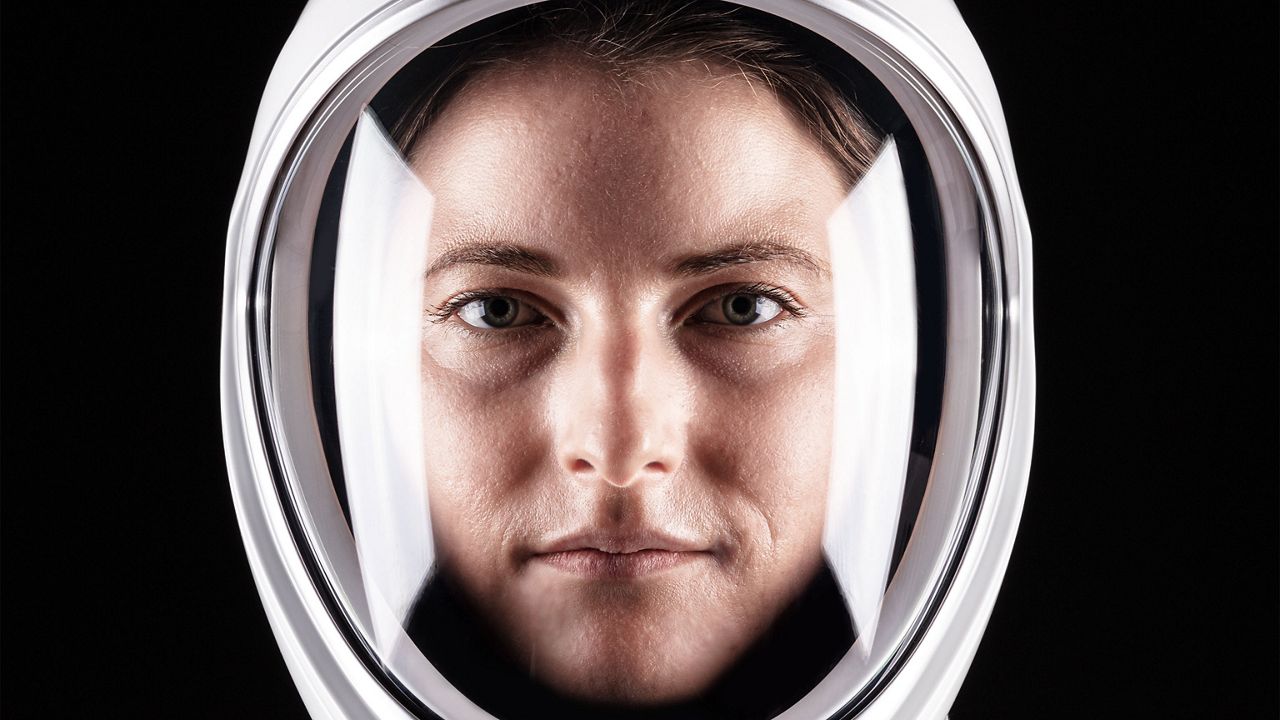
NASA Astronaut Kayla Barron — Mission Specialist
Kayla Barron, 34, is the youngest member of the Crew-3 astronauts and will also have a truly unique experience.
The launch of Falcon 9 booster B1067 with Crew Dragon Endurance on top will not only be Barron’s first launch as an astronaut, but also her first ever in person.
“I'm so excited — our crew is so excited and we feel really ready to go,” she said. “You know, in the Navy, you just, your crew is the most important thing because you're going out and doing these crazy things in crazy places. And I couldn't have hoped for a better crew than the one I ended up on. I feel really lucky to be flying with those guys."
After graduating from Richland High School in Richland, Wash., in 2006, Barron went on to earn a bachelor’s degree in systems engineering from the U.S. Naval Academy and a master’s degree in nuclear engineering from the University of Cambridge. She told Spectrum News 13 that she wanted to join the military back when she was 12-years-old.
Her expertise led her to the Navy’s nuclear power and submarine officer training and serving aboard the USS Maine. But it was while she was serving as the Flag Aid to the Superintendent of the U.S. Naval Academy that she had a conversation that changed her life.
“I was kind of doing that soul searching when I got introduced to Kay Hire — a Naval Academy graduate — who worked in naval aviation and then became an astronaut," Barron said. "And she was telling me about her experience aboard the space shuttle when they got to be a part of assembling the Space Station."
“And as we talked more and asked her more questions, it just occurred to me that the Space Station is a submarine in space," Barron added. "When I look at it, that's what I think of it. So similar in terms of the engineering challenges you face, but especially the kind of team it takes to operate successfully in those environments.”
Barron was selected in 2017 to join the Astronaut Candidate Class, alongside Raja Chari. The two of them were also selected as the first 18 astronauts for the Artemis program, which will ultimately send humans back to the Moon.
She said there are many parallels in training for both programs.
“In our partnership with SpaceX, we really helped develop what crew training looks like because we have a lot of experience and understanding how to develop humans and their skills and abilities to operate in those environments,” Barron said. “So it was a real partnership in developing the training for SpaceX, and I think we'll apply those lessons to our training for Orion.”
She said having that prior relationship with Chari was great when they were both selected for Crew-3 and that having Thomas Marshburn as their experienced anchor is a great asset. She said Matthias Maurer, the astronaut from the European Space Agency, has also been a delight to train with for this mission.
“We feel really lucky," she said. "I think we would all say that Matthias is the most innovative and creative thinker on our crew. He always has a solution or an idea that never occurred to any of the rest of us.
“And so, he really pushes us to think outside the box and figure out how to optimize whatever we're doing. And he, he's just such an awesome adventurer or travel buddy.”
Barron added that as much as she’s excited for her own space flight, she said one of the most surreal parts of the mission will be getting to meet one of her mentors, astronaut Mark Vande Hei, aboard the ISS and give him a microgravity hug.
“I was in Star City, when he left for his launch at Baikonur," she said. "So, I was able to give him a big hug and tell him good luck on the launch. And he was just like, ‘I can't wait to see you in space. And it just blew my mind that the next time I was going to see Mark Vande Hei was on the Space Station.
"So, I think kind of just finally seeing that come to fulfillment as a rookie, getting to see a friend and mentor who's been up there already for almost six months is really exciting.”
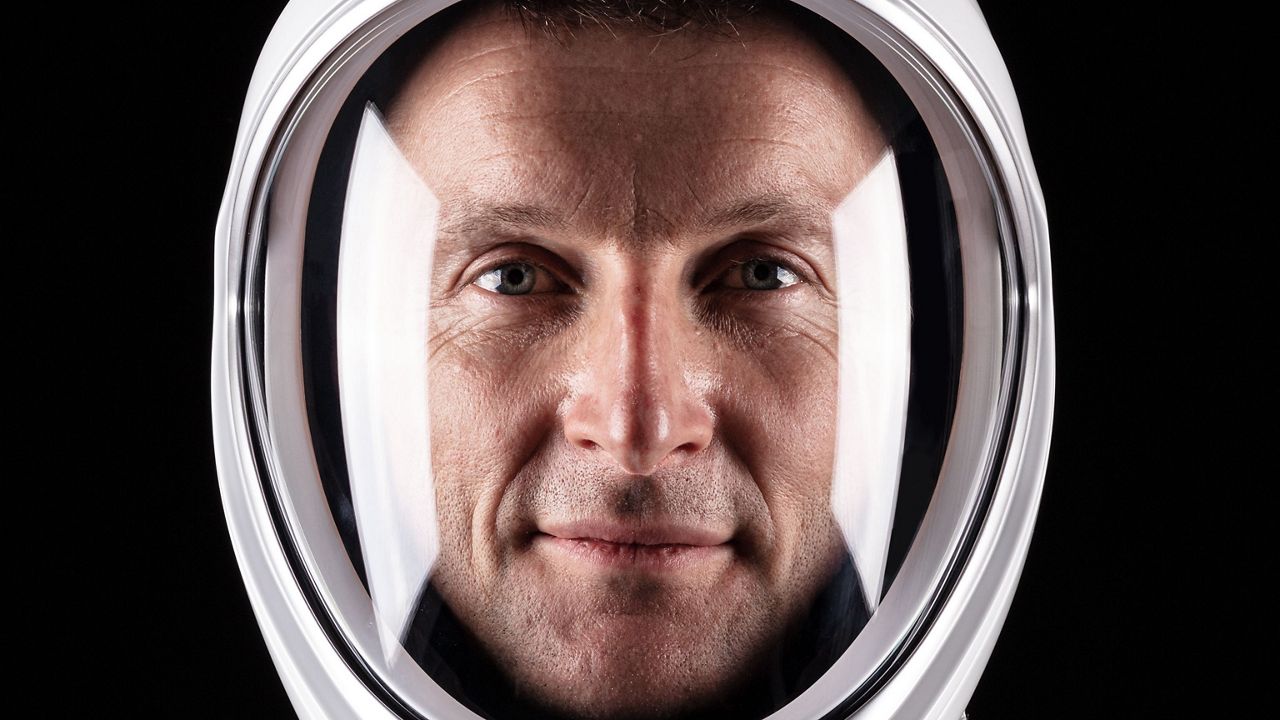 Astronaut Matthias Maurer of ESA (European Space Agency), SpaceX Crew-3 Mission Specialist, poses for a portrait in his pressure suit at SpaceX headquarters in Hawthorne, California. (Photo: SpaceX)
Astronaut Matthias Maurer of ESA (European Space Agency), SpaceX Crew-3 Mission Specialist, poses for a portrait in his pressure suit at SpaceX headquarters in Hawthorne, California. (Photo: SpaceX)

ESA Astronaut Matthias Maurer — Mission Specialist
Matthias Maurer, 51, joined Europe’s astronaut corps in 2015, but participated in the selection process back in 2008/2009. He became a part of ESA in 2010 “as a crew support engineer and eurocom for the Columbus flight control team.”
Prior to his career with ESA, Maurer received an engineering diploma in materials technology from the EEIGM/INPL in Nancy, France, and two engineering diplomas in materials science and materials technology from Saarland University in Germany.
He also worked as a paramedic with the Malteser Emergency Service while in high school and while getting his undergraduate degree.
During a press conference on Oct. 7, he said that the time aboard the ISS will help extend his love of travel.
“Before becoming an astronaut, I actually fulfilled my big dream of traveling around the world for one entire year. And now, from space, I obviously want to revisit these same places,” Maurer said. “I also want to discover Africa because I haven’t seen a lot of African and the perspective from space, the third dimension, is something really fabulous. And every time I think of it, I get goosebumps all over my skin.”
In a similar fashion to Kayla Barron and Mark Vande Hei, Mauer will also get to experience a reunion while onboard the ISS. Back in 2016, he participated in the NASA Extreme Environment Mission Operations (NEEMO) 21 mission. This was a 16-day simulated space mission performed 62 feet below the surface in the Florida Keys National Marine Sanctuary.
One of the other members of that team is NASA astronaut Megan McArthur, who is currently serving aboard the ISS as part of Crew-2.
Maurer will also meet fellow ESA astronaut Thomas Pesquet while on the orbiting outpost. Maurer said that he plans to bring a taste of home to share with his fellow crewmates while on the Space Station.
“It's a venison Ragu that's made from potato soup — typical German food — and I will bring it up and I will share it with my crewmates," he said. "It's a surprise for me, so I haven't tested it yet. But I'm pretty sure it will be very delicious and everyone is looking forward to it.”
In 2020, he revealed that the name for his mission will be “Cosmic Kiss.”
“It communicates the special connection the station provides between Earth’s inhabitants and the cosmos,” Matthias told ESA. “It also conveys the value of partnership in exploring farther to the Moon and Mars, alongside the need to respect, protect and preserve the nature of our home planet as we seek a sustainable future on Earth.”




